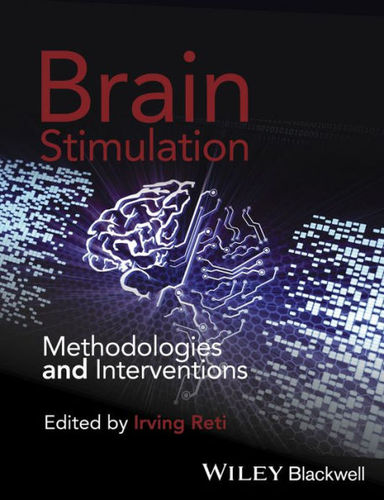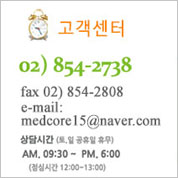상품상세정보
의학서적전문 "성보의학서적"의 신간의학도서입니다.
Brain stimulation technologies are both tools to probe brain function and to provide therapeutic options for patients with neuropsychiatric disease where pharmacological options are not viable. Although the field has been in existence for over seventy years, research interest in brain stimulation has been on the rise particularly in the last two decades.
Brain Stimulation: Methodologies and Interventions is an introduction to the field of brain stimulation technology and its applications. The book explores how brainstimulating technologies work in the context of brain pathways that mediate normal and abnormal brain function. Chapters cover neuroanatomy and activity dependent changes in neuronal function triggered by brain stimulation, as well as applications of brain stimulation technologies themselves, including noninvasive procedures that rely on convulsive or seizure therapeutics, and non-convulsive therapies such as magnetic and electrical brain stimulation.
Authored by an international group of leaders in the field, Brain Stimulation is a valuable resource for both neuroscience researchers and clinicians.
-도서목차-
Contributors xi
1 Introduction to Brain Stimulation 1
Irving M. Reti and Andrew D. Chang
Introduction 1
A Historical Perspective 2
Focal Activation 3
Connectivity 5
Development of Invasive Brain Stimulation 7
Ethical Issues 9
References 9PART A BRAIN CIRCUITRY AND PLASTICITY 13
2 A Balanced Mind: A Network Perspective on Mood and Motivation Brain Pathways 15
Morten L. Kringelbach
Introduction 15
Dysregulation of Emotion and Mood 18
Potential for Intervention 21
Conclusion 23
References 24
3 Motor Pathways, Basal Ganglia Physiology, and Pathophysiology 29
Hagai Bergman, Shiran Katabi, Maya Slovik, Marc Deffains, David Arkadir, Zvi Israel, and Renana Eitan
Introduction 29
The Classic Models of Basal Ganglia Anatomy 30
Basal Ganglia Physiology 33
The Pathophysiology of Hypo- and HyperDopaminergic States 35
From Physiology to Understanding and Therapy—the Computational Models of the Basal Ganglia 37
References 41
4 Viewing Brain Stimulation from a Plasticity Perspective
45Jay M. Baraban
Long-Term Potentiation: A Primer 45
AMPA Versus NMDA Receptors 46
Distinct Mechanisms of LTP Induction and Expression 48
Synapse Specificity of LTP 48
Relevance of LTP Mechanisms to Mode of Action of tDCS 49
Long-Term Depression 51
Metaplasticity and Monoamines 52
Clues to rTMS Mode of Action 52
Future Directions 54
Summary 55
References 55
PART B TECHNOLOGY 57
(1) Non-Invasive Brain Stimulation Modalities 59
(a) Convulsive 59
5 Introduction to Convulsive Therapy 61
Richard D. Weiner
Introduction 61
The History of Convulsive Therapy 62
Electroconvulsive Therapy: Basic Principles 64
Electroconvulsive Therapy: Clinical Role 67
Magnetic Seizure Therapy (MST) 76
Focal Electrically Administered Seizure Therapy (FEAST) 77
Future of Convulsive Therapy 77
References 78
6 Improving ECT Efficacy and Decreasing Cognitive Side Effects 83
Keith G. Rasmussen
Introduction 83
ECT Outcome Assessment: Therapeutic Efficacy and Cognitive Side Effects 83
ECT Treatment Technique: Basic Concepts 84
Electrode Placement 86
Stimulus Dosage 88
Stimulus Parameter Configuration 89
Treatment Frequency 93
Concomitant Psychotropic Drugs 94
Choice of Anesthetic Drug 96
References 100
7 How Does Electroconvulsive Therapy Work? 107
Irving M. Reti
Introduction 107
What Can We Learn from ECT’s Action as an Antidepressant? 107
What Can We Learn from ECT’s Action in Treating Catatonia? 112
How Do Stimulus Parameters that Trigger the Seizure Influence How It Works? 113
Conclusions and Implications for ECT Treatment 116
References 117
8 Magnetic Seizure Therapy for the Treatment of Depression 123
Sarah H. Lisanby and Zhi-De Deng
Introduction 123
Definitions 123
Rationale for MST 124
History of MST: A Translational Developmental Trajectory 125
MST Technique 127
E-field Distribution with MST 133
Neurophysiological Effects of MST 135
Safety 139
Antidepressant Efficacy 140
Future Directions for MST Development 142
Conclusions 144
References 144
(b) Non-Convulsive 149
9 Introduction to Nonconvulsive Brain Stimulation: Focus on Transcranial Magnetic Stimulation 151
Masashi Hamada and John C. Rothwell
History of Nonconvulsive Transcranial Brain Stimulation Technique in Humans 151
Basics of Transcranial Magnetic Stimulation 152
New Techniques: Static Magnets and Pulsed Ultrasound 160
References 160
10 Advances in Transcranial Magnetic Stimulation Technology 165
Angel V. Peterchev, Zhi-De Deng and Stefan M. Goetz
Introduction 165
Pulse Source Technology and Waveforms 165
Coils 171
Technical Aspects of Concurrent TMS and Neuroimaging 179
Conclusion and Future Directions 182
References 183
11 Applications of TMS to Study Brain Connectivity 191
Gabriela Cantarero and Pablo Celnik
Introduction 191
Probing Connectivity using Bifocal TMS 192
Connectivity Studies Using TMS Plus fMRI, PET or EEG 204
Conclusions 206
References 206
12 Therapeutic Applications of rTMS for Psychiatric and Neurological Conditions 213
Mark S. George, E. Baron Short, Suzanne E. Kerns, Xingbao Li, Colleen Hanlon, Christopher Pelic, Joseph J. Taylor, Bashar W. Badran, Jeffrey J. Borckardt, Nolan Williams, and James Fox
Introduction 213
The Depressions 213
The Anxiety Disorders 220
The Schizophrenias 221
Pain Syndromes 222
Movement Disorders 222
Repairing the Damaged Brain 223
Other Conditions 223
Summary and Conclusions 225
References 225
13 Transcranial Direct Current Stimulation: Modulation of Brain Pathways and Potential Clinical Applications 233
Michael A. Nitsche, Rafael Polania, and Min-Fang Kuo
Introduction 233
Physiological Basis of tDCS 233
Impact of tDCS on Cognition 242
Application of tDCS in Neuropsychiatric Diseases 244
Concluding Remarks 247
References 248
(2) Invasive Brain Stimulation Modalities 255
14 Epidural Cortical Stimulation 257
Ziad NahasIntroduction 257
Options for Treatment Resistant Depression 257
Epidural Cortical Stimulation 259
Disrupted Emotion Regulation in Depression and EpCS 263
Deficits in Mentalization in Depression and EpCS 263
Comparison Across Brain Stimulation Therapies 265
Summary 266
References 266
15 Neurological Indications for Deep Brain Stimulation 271
Jennifer J. Cheng, William S. Anderson, and Frederick A. Lenz
Introduction 271
Current Indications for Deep Brain Stimulation 271
Safety of Deep Brain Stimulation 274
Fundamentals of Stimulation 275
Lead Placement 277
Conclusion 282
References 283
16 Psychiatric Indications for Deep Brain Stimulation 289
Reinier Prosée and Damiaan Denys
Introduction 289
Deep Brain Stimulation and Obsessive Compulsive Disorder 289
Deep Brain Stimulation and Major Depressive Disorder 293
Deep Brain Stimulation and Drug Addiction 296
Potential New Indications for Deep Brain Stimulation 298
References 300
17 Vagus Nerve Stimulation for Epilepsy and Depression 305
Charles R. Conway, Mark A. Colijn, and Steven C. Schachter
Introduction 306
The VNS Therapy Device 306
Vagus Nerve Anatomy 308
Mechanisms of Action of VNS 311
Epilepsy 317
Depression 322
General Safety Considerations 326
Future Directions 326
Summary 327
References 328
Index 337
기타 신간의학서적과 의학도서에 관련된 문의사항은 고객센터(02-854-2738) 또는 저희 성보의학서적 홈페이지내 도서문의 게시판에 문의바랍니다.
감사합니다.
성보의학서적 "http://www.medcore.kr





























